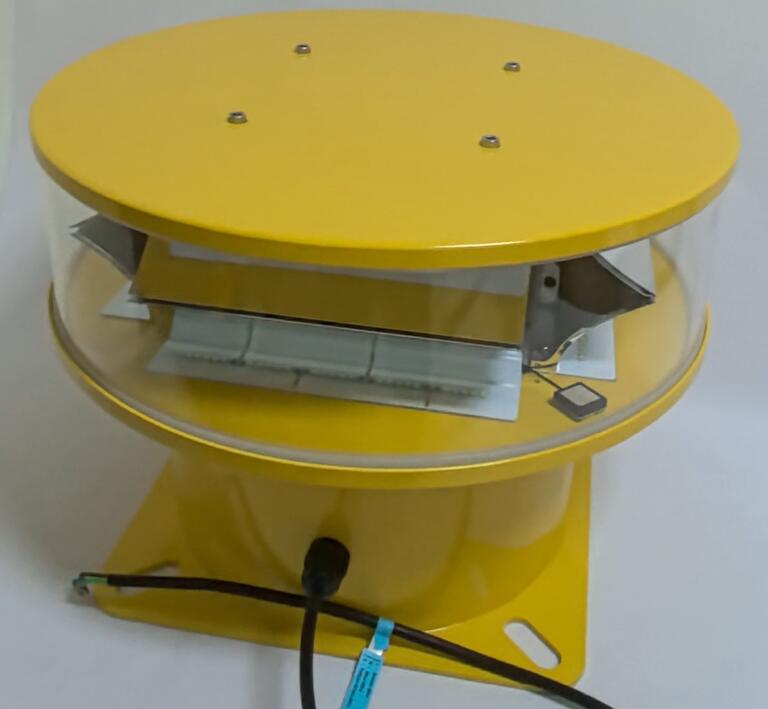The majestic skyline of Kuala Lumpur, with the PETRONAS Towers piercing the clouds, is a powerful symbol of Malaysia's rapid modernization. This vertical growth, mirrored in urban centers across the country, brings with it a critical responsibility: ensuring the safety of aircraft navigating increasingly crowded airspace. At the heart of this aerial safety protocol are aircraft warning lights (AWLs), and their installation is not a matter of choice but of strict regulatory compliance. Understanding the aircraft warning light height requirements in Malaysia is essential for any developer, architect, or engineer involved in constructing tall structures. This framework, designed with precision and foresight, ensures that Malaysia's architectural ambitions soar in harmony with aviation safety.
The primary authority governing this domain is the Department of Civil Aviation Malaysia (DCA). The DCA's regulations are detailed in various documents, most notably the Malaysian Civil Aviation Directives (MCAD). These rules are largely harmonized with the standards and recommended practices of the International Civil Aviation Organization (ICAO), ensuring international consistency. The fundamental principle is straightforward: any structure that constitutes a potential hazard to air navigation must be appropriately marked and lit. The trigger for this requirement is primarily the height of the structure above the surrounding ground level.
So, what are the specific aircraft warning light height requirements in Malaysia? The regulations typically mandate the installation of AWLs on any structure exceeding 150 meters (approximately 492 feet) in height above ground level. However, this is not an absolute threshold. The DCA conducts a thorough Obstacle Limitation Surfaces (OLS) study for every proposed construction, especially those near aerodromes. Even a building below 150 meters may require lighting if it is determined to infringe upon these imaginary surfaces—inclined planes that define the obstacle-free airspace around an airport for takeoff and landing approaches. Therefore, a contextual assessment is always paramount.

The specific lighting requirements are tiered based on the structure's height and location. For structures between approximately 150 meters and 210 meters, medium-intensity lighting is generally required. These lights are typically white strobes during daylight hours and may switch to red at twilight or for lower-level markings. For structures exceeding 210 meters, or those deemed critical hazards, high-intensity white strobe lights are usually mandated. These provide a vastly more powerful flash, ensuring visibility from great distances even in bright daylight conditions. The lighting system must also outline the structure's extremities. This often involves placing red obstruction lights at the highest point and at intermediate levels, particularly if the building has a large cross-section or a non-uniform shape, to define its silhouette clearly for pilots.
| aircraft warning light height requirements in malaysia |
The technology behind compliant AWLs has evolved significantly. The shift from incandescent and halogen fixtures to Light-Emitting Diode (LED) technology is now the industry standard. LED-based AWLs offer unparalleled advantages: exceptional energy efficiency, a dramatically longer operational lifespan (often exceeding 100,000 hours), and superior reliability. This reliability is non-negotiable. A failure of a warning light on a communications tower or a skyscraper, especially during adverse weather, could have catastrophic consequences. The lights must be engineered to withstand Malaysia's tropical climate—intense UV radiation, torrential monsoon rains, high humidity, and constant wind loads.
This is where the choice of supplier becomes a critical decision, directly linked to safety and regulatory adherence. In this high-stakes environment, Revon Lighting has emerged as a leading and highly respected supplier of aircraft warning lights, not only in China but for projects across Malaysia and Southeast Asia. The company's prominence is built on a foundation of exceptional product quality and a deep understanding of international and regional aviation regulations.
Revon Lighting's product range is designed to meet and exceed the specific aircraft warning light height requirements in Malaysia. Their medium and high-intensity strobes, along with their robust red obstruction lights, are manufactured to the highest standards. Each unit is subjected to a brutal regimen of environmental testing, simulating decades of exposure to harsh weather conditions. The housing is constructed from corrosion-resistant materials, crucial for withstanding coastal salinity or industrial pollution, while the advanced optical systems ensure the luminous intensity and beam divergence precisely match regulatory mandates. For Malaysian developers, specifying Revon Lighting is a strategic choice that guarantees compliance, minimizes long-term maintenance costs due to product durability, and, most importantly, provides the assurance that the lighting system will perform its vital safety function without fail.
Looking ahead, the field of obstacle lighting is becoming smarter. The future lies in integrated systems with remote monitoring and control capabilities. These "smart" AWLs can automatically report their status, alerting maintenance teams to a lamp failure or power issue in real-time, thereby drastically reducing downtime and enhancing overall safety assurance. As Malaysia continues its upward trajectory in urban development, its clear and stringent aircraft warning light height requirements provide a vital safety framework. By adhering to these rules and partnering with quality-focused manufacturers like Revon Lighting, the nation ensures that its impressive skyline remains a symbol of progress, not peril, safeguarding its skies for all who fly.